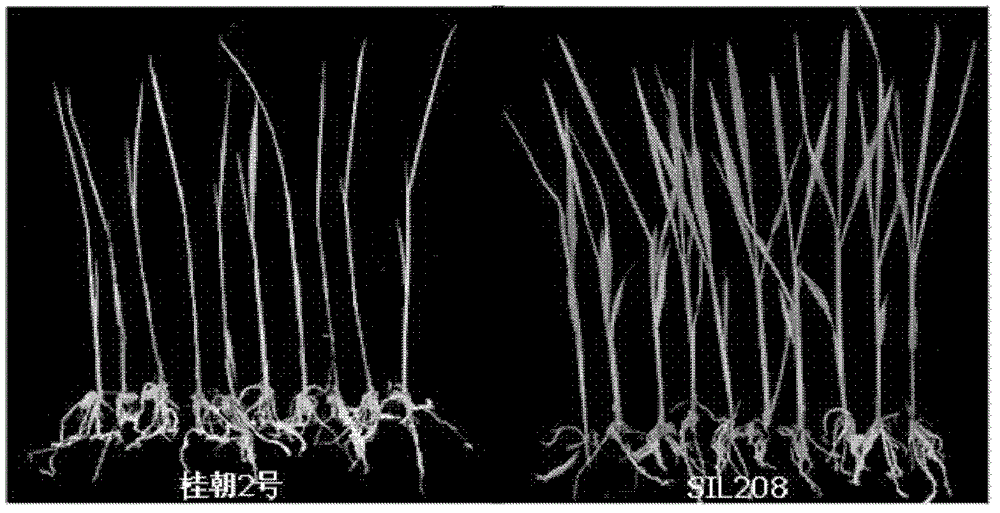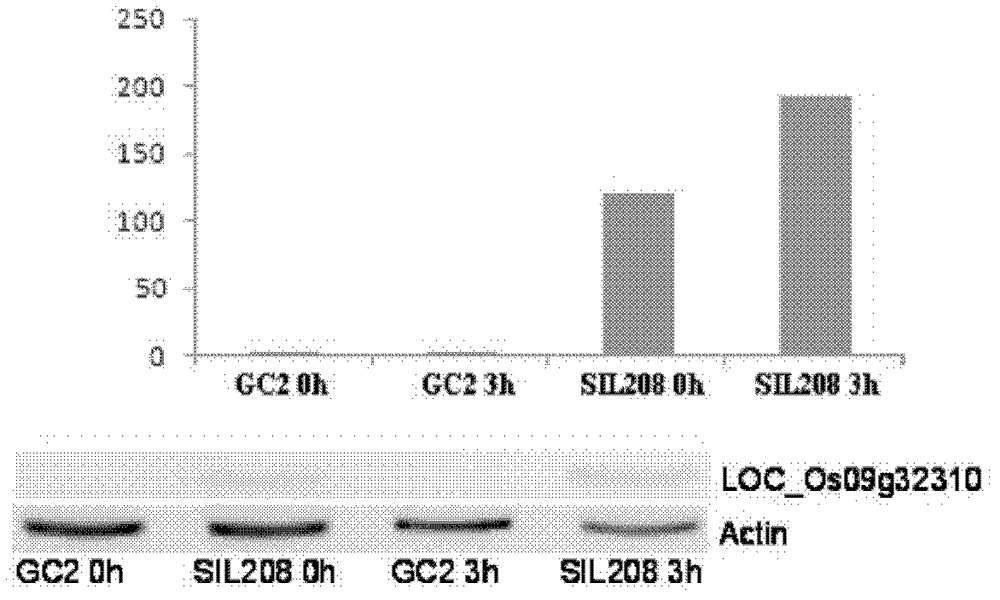Plant cold tolerance-associated protein LTT9, coding genes thereof and applications
A coding and genetic technology, applied in protein LTT9 and its coding gene and application fields, can solve problems such as genetic bottlenecks, and achieve the effects of simple operation, high plant height, and improved cold resistance
- Summary
- Abstract
- Description
- Claims
- Application Information
AI Technical Summary
Problems solved by technology
Method used
Image
Examples
Embodiment 1
[0049] Example 1. Discovery of cold tolerance-related protein LTT9 and genes
[0050] First, Jiangxi Dongxiang common wild rice was backcrossed and self-crossed with the ultra-high-yielding rice variety Guichao 2, and an introgression line population (one of which was SIL208) with Guichao 2 as the genetic background was constructed. Seedling cold tolerance identification, the specific identification method is: after the seeds are sterilized with 20% sodium hypochlorite, they are placed in a glass test tube with a bottom diameter of 5 cm and a height of 12 cm, and the seedlings are germinated in a tissue culture room at 25°C. Cultivate with distilled water in the early stage, and start to use 1 / 3B after about 13 days 5 culture medium. Put the neat seedlings with 2 leaves and 1 heart in a glass test tube with a bottom diameter of 5cm and a height of 18cm, and add 1 / 3B about 3cm deep 5 The culture medium was placed in a 4°C incubator for 6 days of low temperature treatment, and...
Embodiment 2
[0052] Embodiment 2, the acquisition and identification of transgenic LTT9 rice
[0053] 1. Construction of recombinant expression vector super1300-LTT9
[0054] 1. Design specific primer pairs
[0055] Primers were designed according to the full-length cDNA sequence of Nipponbare's LOC_Os09g32310 (genbank: AK074021), and restriction endonucleases Xba I and Kpn I recognition sites and protective bases were introduced at both ends of the primers respectively. Sequence and protection base) are as follows:
[0056] Ge9F: 5'- GCTCTAGA ATGCAGCTCAGTTTCTTCC-3' (carrying XbaI restriction recognition sequence);
[0057] Ge9R: 5'- GCGGTACC TCATCCTATGGTTATTTTCAGC-3' (carrying KpnI restriction recognition sequence).
[0058] 2. After the seedling stage plants of the rice cold-tolerant line SIL208 were treated at a low temperature of 4°C, the shoots were taken to extract total RNA.
[0059] 3. Using the total RNA extracted in step 2 as a template, perform reverse transcription usi...
PUM
 Login to View More
Login to View More Abstract
Description
Claims
Application Information
 Login to View More
Login to View More - R&D Engineer
- R&D Manager
- IP Professional
- Industry Leading Data Capabilities
- Powerful AI technology
- Patent DNA Extraction
Browse by: Latest US Patents, China's latest patents, Technical Efficacy Thesaurus, Application Domain, Technology Topic, Popular Technical Reports.
© 2024 PatSnap. All rights reserved.Legal|Privacy policy|Modern Slavery Act Transparency Statement|Sitemap|About US| Contact US: help@patsnap.com










